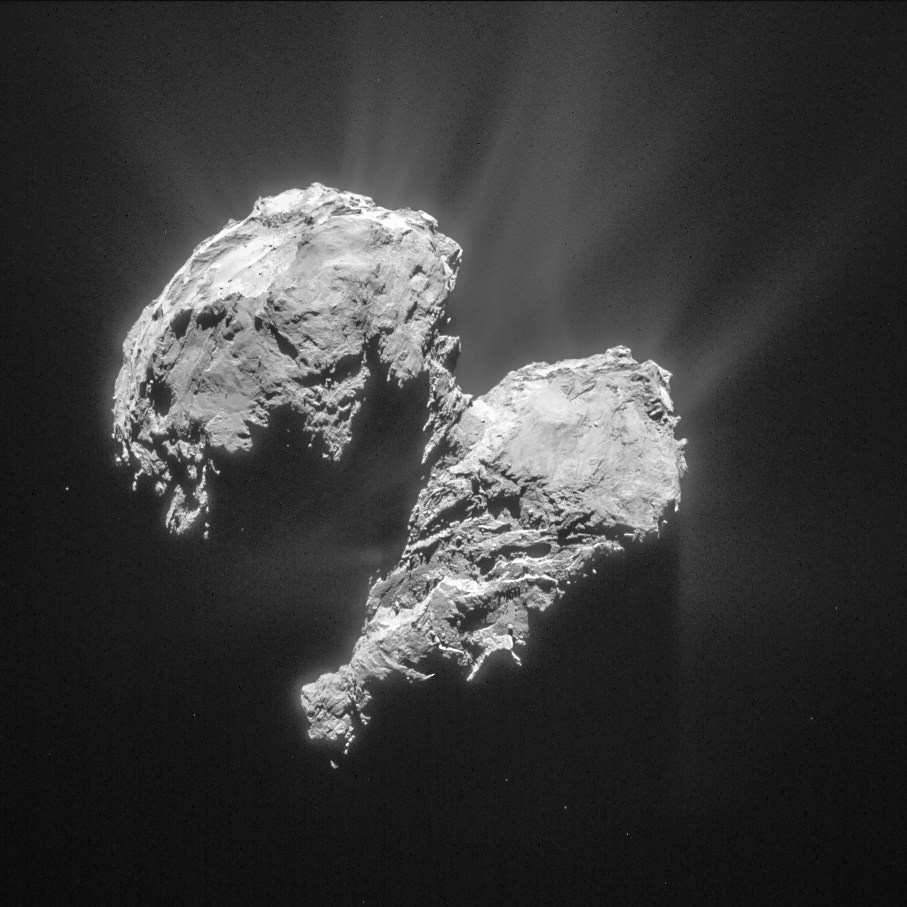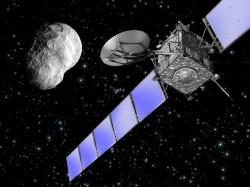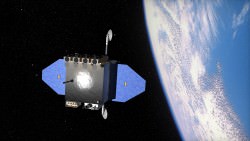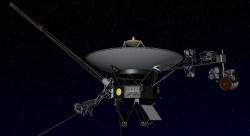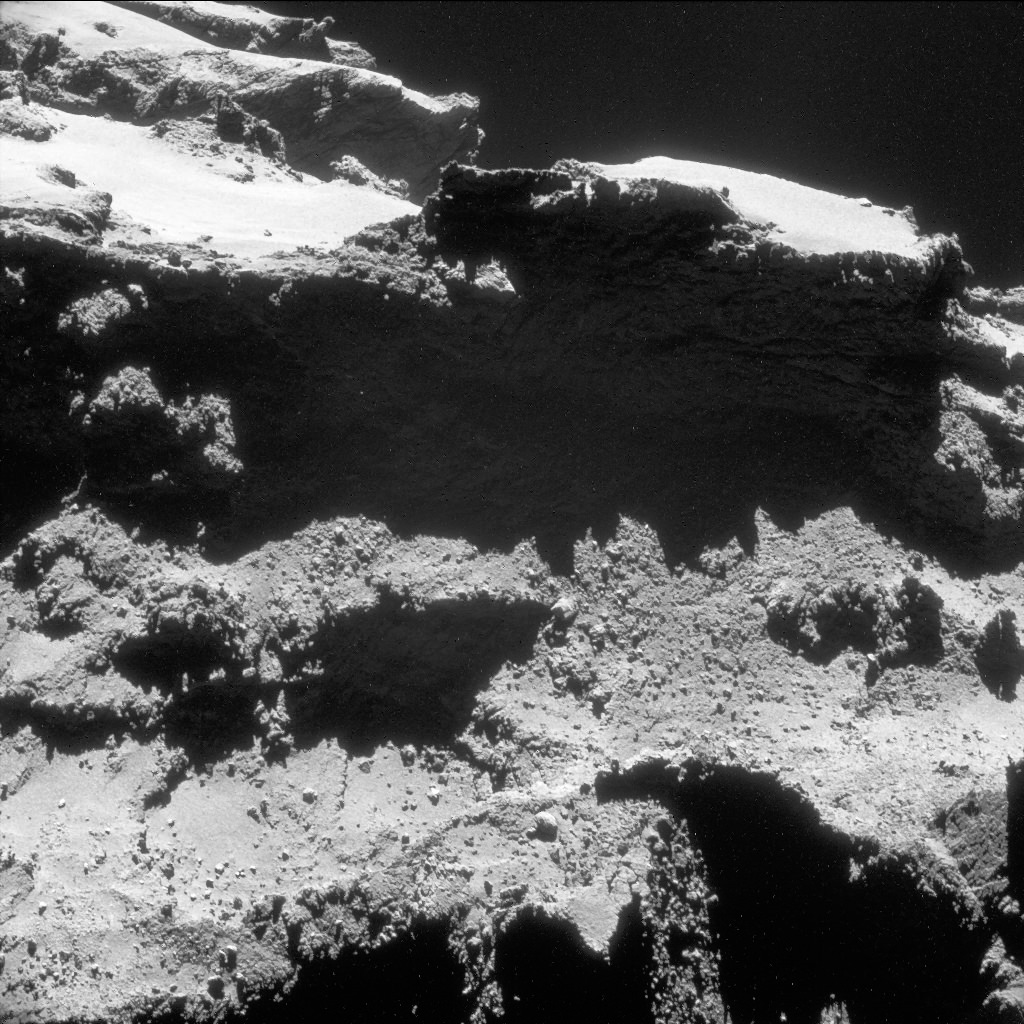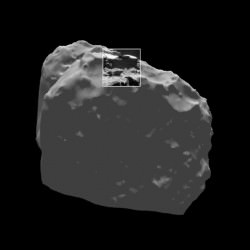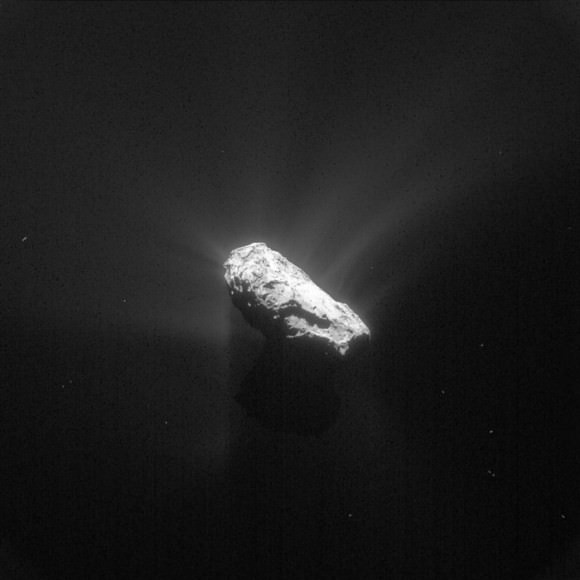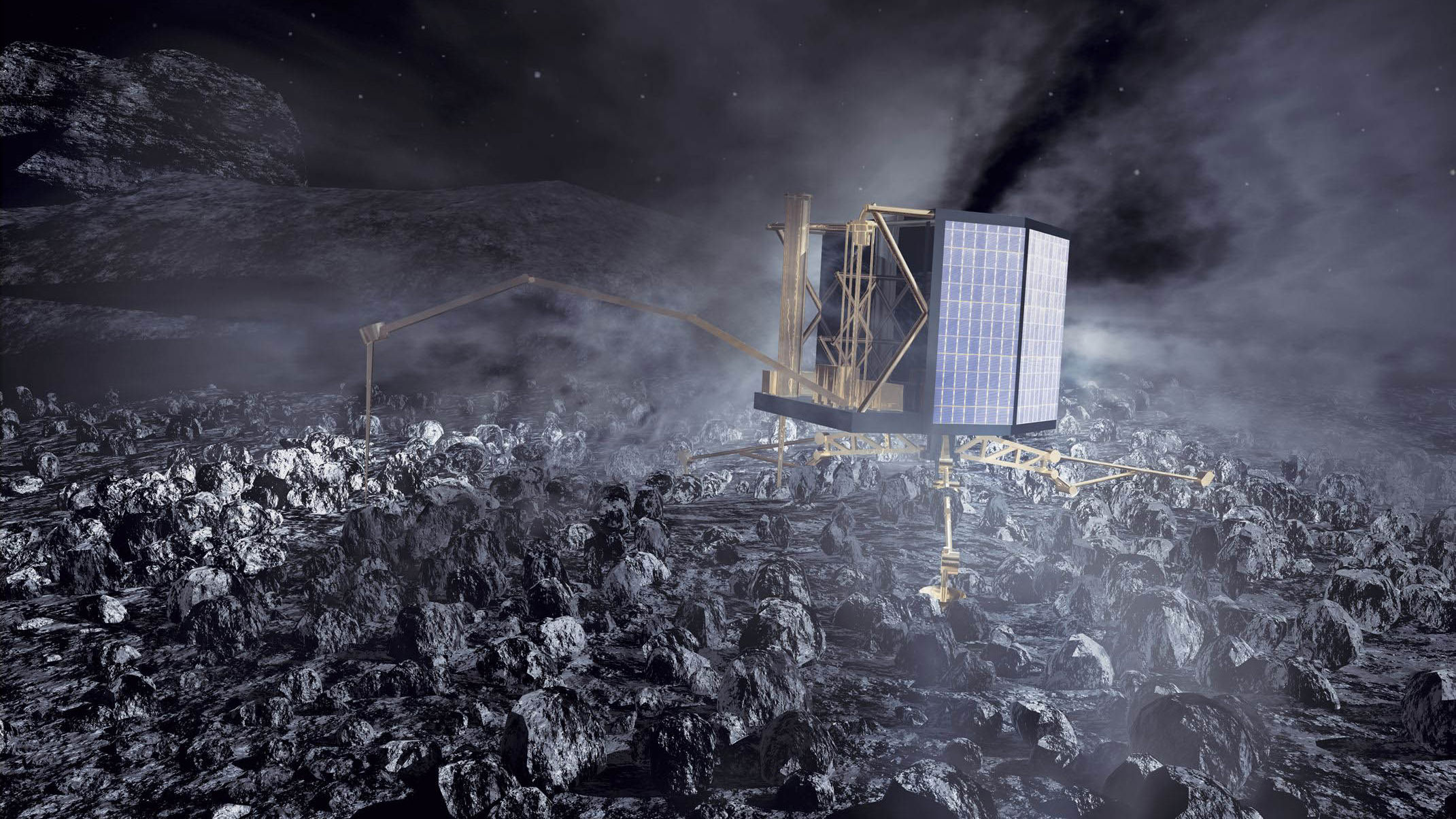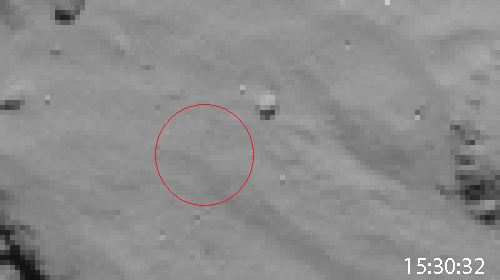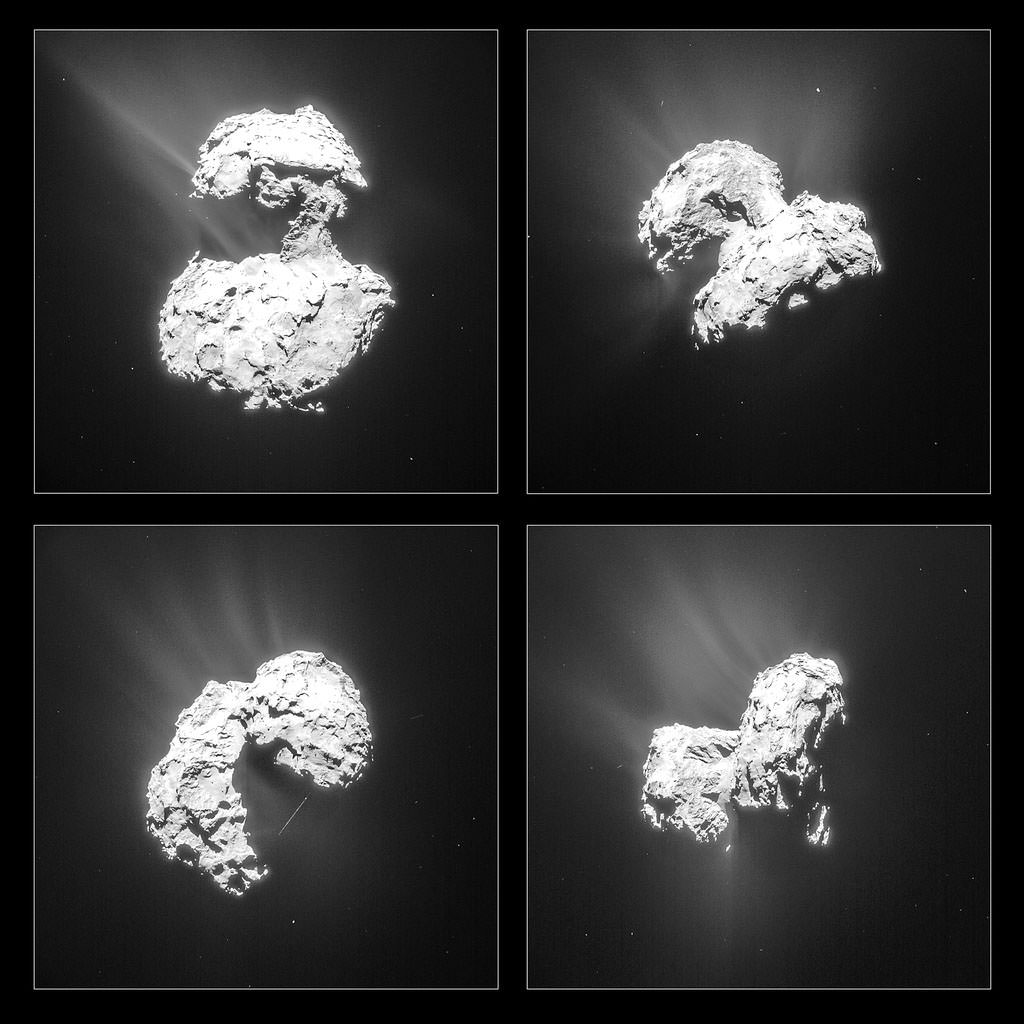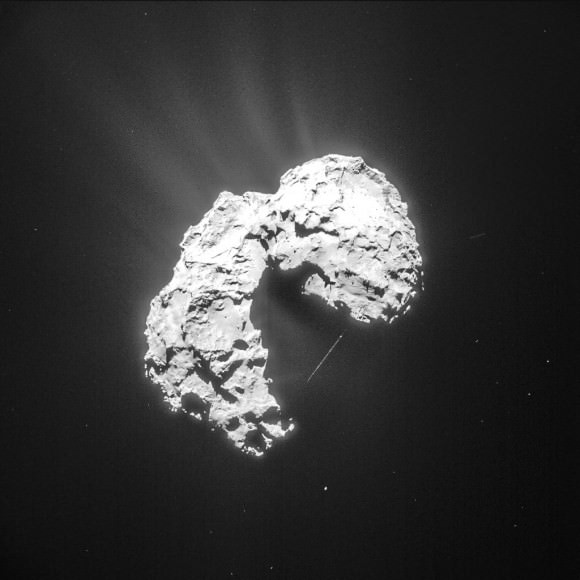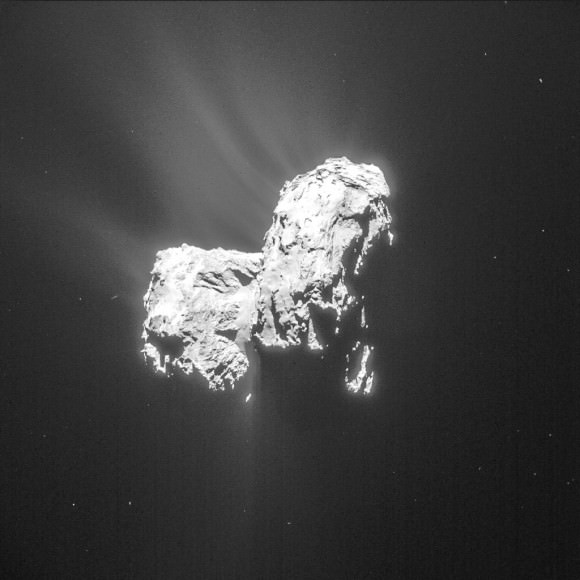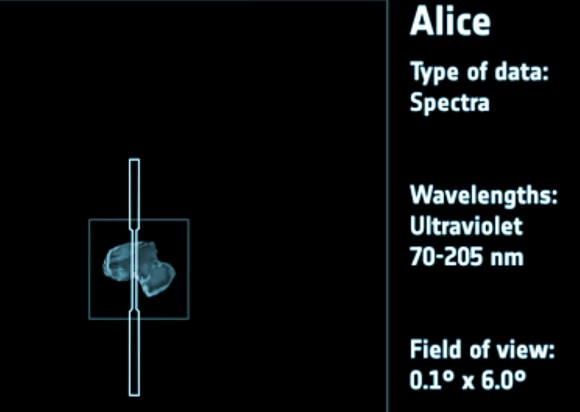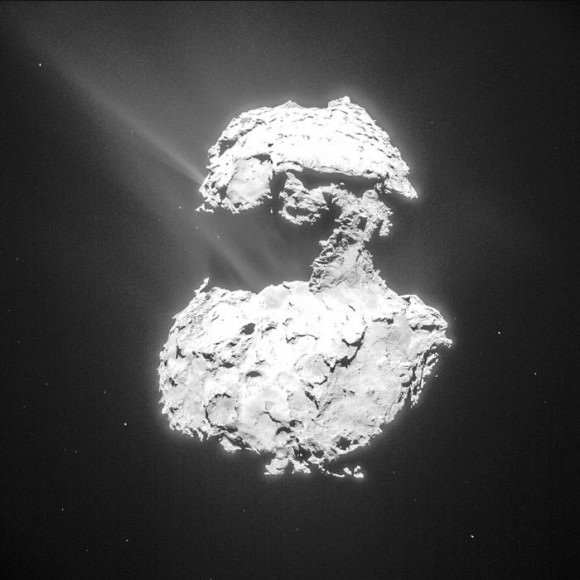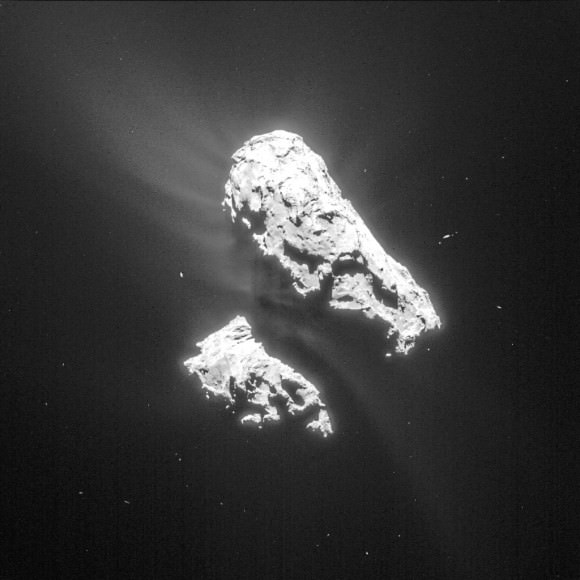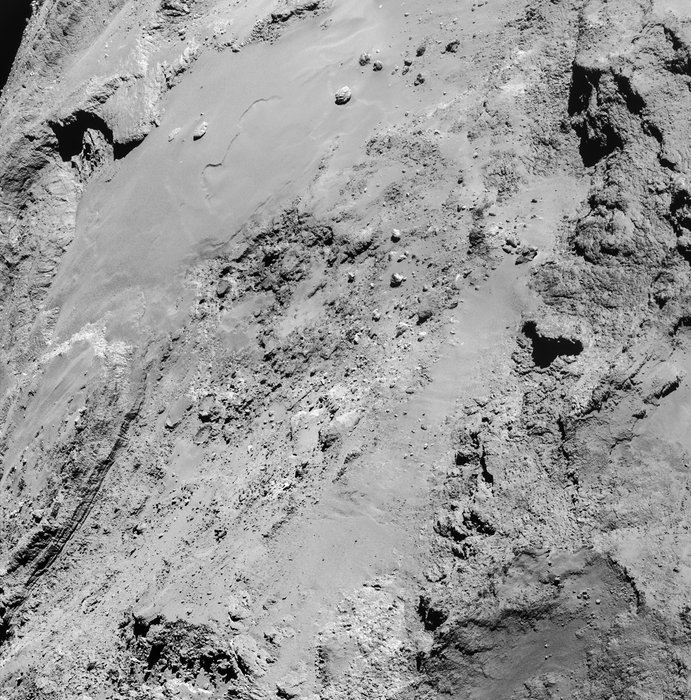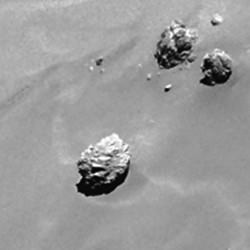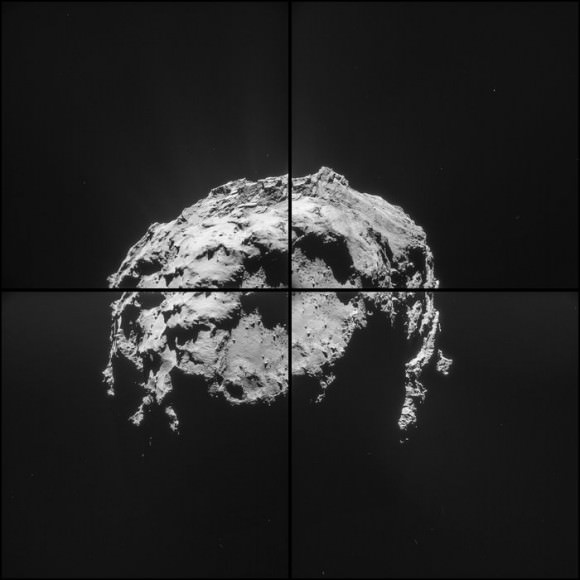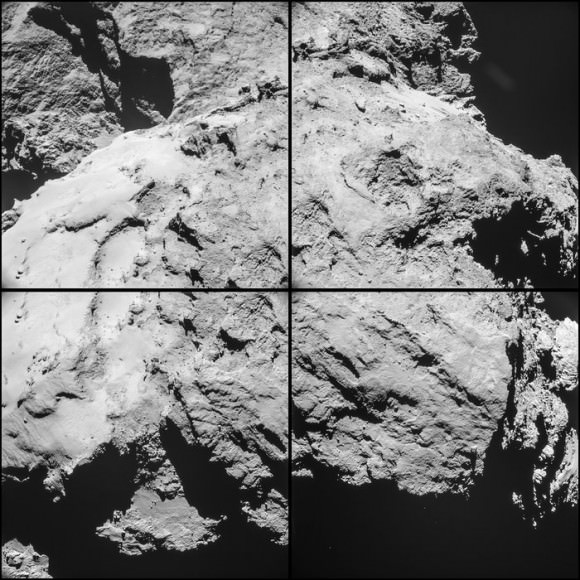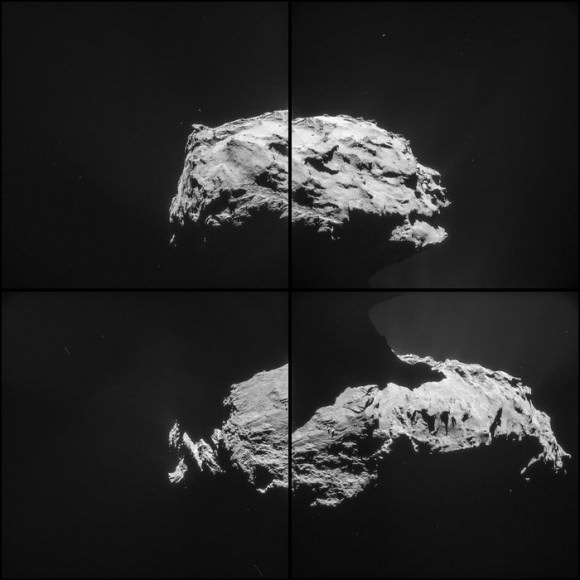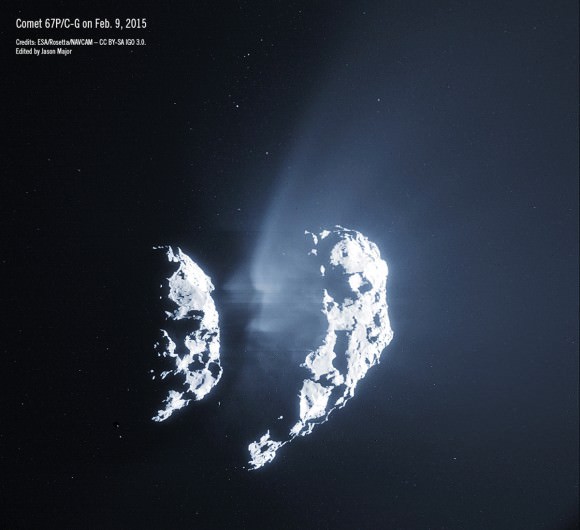A NASA science instrument flying aboard the European Space Agency’s (ESA) Rosetta spacecraft has made a very surprising discovery – namely that the molecular breakup mechanism of “water and carbon dioxide molecules spewing from the comet’s surface” into the atmosphere of comet 67P/Churyumov-Gerasimenko is caused by “electrons close to the surface.”
The surprising results relating to the emission of the comet coma came from measurements gathered by the probes NASA funded Alice instrument and is causing scientists to completely rethink what we know about the wandering bodies, according to the instruments science team.
“The discovery we’re reporting is quite unexpected,” said Alan Stern, principal investigator for the Alice instrument at the Southwest Research Institute (SwRI) in Boulder, Colorado, in a statement.
“It shows us the value of going to comets to observe them up close, since this discovery simply could not have been made from Earth or Earth orbit with any existing or planned observatory. And, it is fundamentally transforming our knowledge of comets.”
A paper reporting the Alice findings has been accepted for publication by the journal Astronomy and Astrophysics, according to statements from NASA and ESA.
Alice is a spectrograph that focuses on sensing the far-ultraviolet wavelength band and is the first instrument of its kind to operate at a comet.
Until now it had been thought that photons from the sun were responsible for causing the molecular breakup, said the team.
The carbon dioxide and water are being released from the nucleus and the excitation breakup occurs barely half a mile above the comet’s nucleus.
“Analysis of the relative intensities of observed atomic emissions allowed the Alice science team to determine the instrument was directly observing the “parent” molecules of water and carbon dioxide that were being broken up by electrons in the immediate vicinity, about six-tenths of a mile (one kilometer) from the comet’s nucleus.”
The excitation mechanism is detailed in the graphic below.
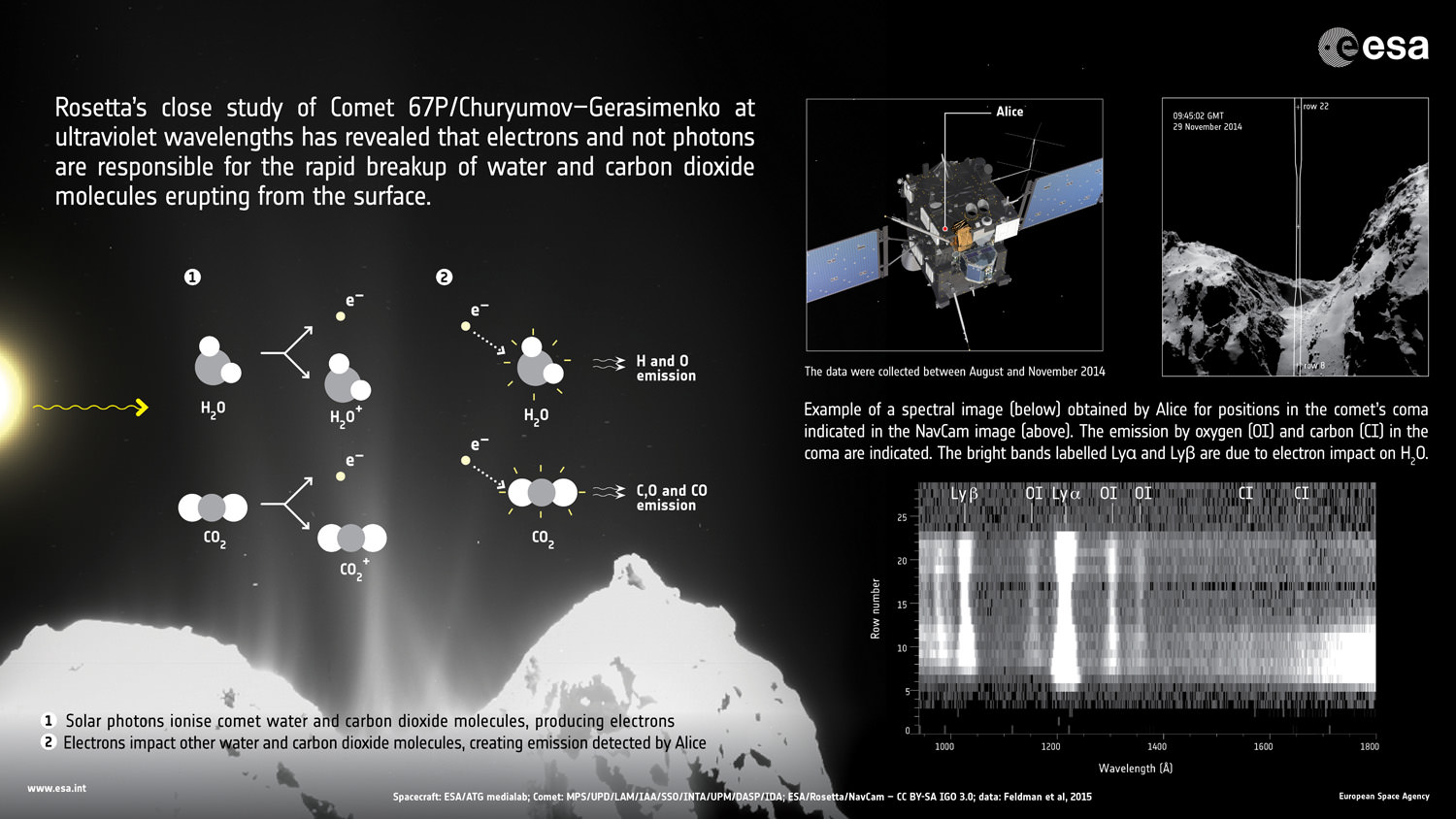
“The spatial variation of the emissions along the slit indicates that the excitation occurs within a few hundred meters of the surface and the gas and dust production are correlated,” according to the Astronomy and Astrophysics journal paper.
The data shows that the water and CO2 molecules break up via a two-step process.
“First, an ultraviolet photon from the Sun hits a water molecule in the comet’s coma and ionises it, knocking out an energetic electron. This electron then hits another water molecule in the coma, breaking it apart into two hydrogen atoms and one oxygen, and energising them in the process. These atoms then emit ultraviolet light that is detected at characteristic wavelengths by Alice.”
“Similarly, it is the impact of an electron with a carbon dioxide molecule that results in its break-up into atoms and the observed carbon emissions.”
After a decade long chase of over 6.4 billion kilometers (4 Billion miles), ESA’s Rosetta spacecraft arrived at the pockmarked Comet 67P/Churyumov-Gerasimenko on Aug. 6, 2014 for history’s first ever attempt to orbit a comet for long term study.
Since then, Rosetta deployed the Philae landing craft to accomplish history’s first ever touchdown on a comets nucleus. It has also orbited the comet for over 10 months of up close observation, coming at times to as close as 8 kilometers. It is equipped with a suite 11 instruments to analyze every facet of the comet’s nature and environment.
Comet 67P is still becoming more and more active as it orbits closer and closer to the sun over the next two months. The pair reach perihelion on August 13, 2015 at a distance of 186 million km from the Sun, between the orbits of Earth and Mars.
Alice works by examining light emitted from the comet to understand the chemistry of the comet’s atmosphere, or coma and determine the chemical composition with the far-ultraviolet spectrograph.
According to the measurements from Alice, the water and carbon dioxide in the comet’s atmospheric coma originate from plumes erupting from its surface.
“It is similar to those that the Hubble Space Telescope discovered on Jupiter’s moon Europa, with the exception that the electrons at the comet are produced by solar radiation, while the electrons at Europa come from Jupiter’s magnetosphere,” said Paul Feldman, an Alice co-investigator from the Johns Hopkins University in Baltimore, Maryland, in a statement.
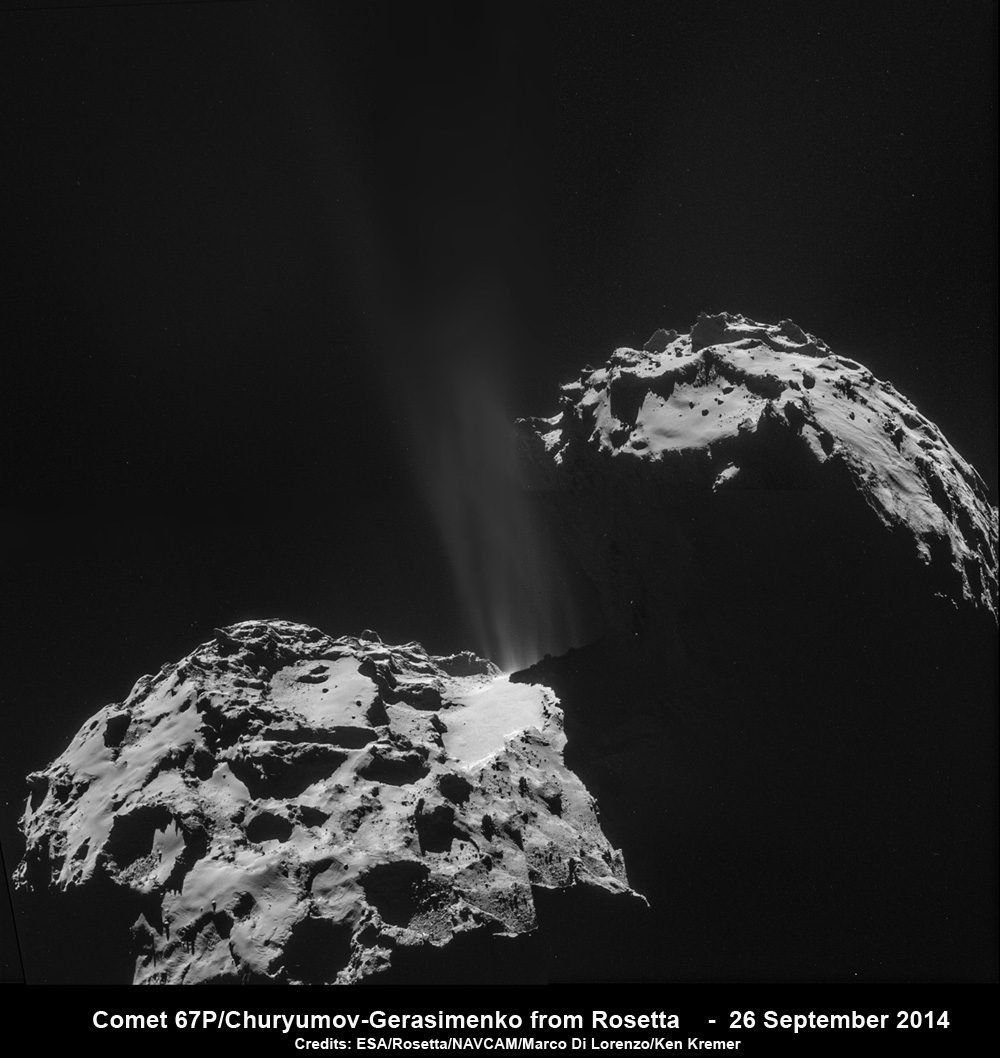
Other instruments aboard Rosetta including MIRO, ROSINA and VIRTIS, which study relative abundances of coma constituents, corroborate the Alice findings.
“These early results from Alice demonstrate how important it is to study a comet at different wavelengths and with different techniques, in order to probe various aspects of the comet environment,” says ESA’s Rosetta project scientist Matt Taylor, in a statement.
“We’re actively watching how the comet evolves as it moves closer to the Sun along its orbit towards perihelion in August, seeing how the plumes become more active due to solar heating, and studying the effects of the comet’s interaction with the solar wind.”
Stay tuned here for Ken’s continuing Earth and planetary science and human spaceflight news.

